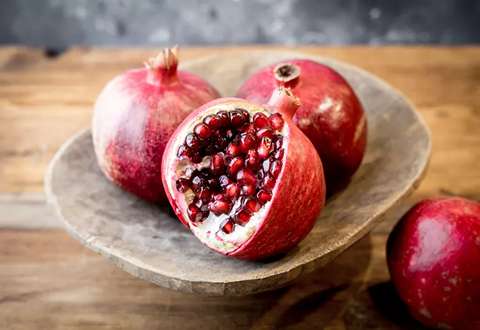Pomegranates, with their vibrant ruby-red seeds encased in a tough, leathery skin, have long captured the imagination of both culinary enthusiasts and health-conscious individuals.
This unique fruit, known for its rich antioxidant content and tantalizing blend of sweet and tangy flavors, has been prized for centuries for its numerous health benefits and culinary versatility.
In this comprehensive guide, we will delve into the fascinating world of pomegranates, from selecting the perfect fruit to incorporating it into delicious recipes, and everything in between.

So let's embark on a journey to discover all there is to know about this delightful and nutritious fruit.
The Allure of Pomegranates: A Brief Overview
Pomegranates (Punica granatum) are fruits that belong to the Lythraceae family and are native to Iran and the Himalayas in northern India. These distinctive fruits have a tough, leathery rind that encases hundreds of jewel-like arils, each containing a juicy, translucent seed. Pomegranates are as visually appealing as they are nutritious, with their deep red hue symbolizing fertility, prosperity, and good fortune in many cultures.
Health Benefits of Pomegranates
Pomegranates have earned a reputation as a "superfood" due to their impressive array of health benefits.
Rich in antioxidants such as punicalagin and punicic acid, these fruits have potent anti-inflammatory properties that may help protect against chronic diseases such as heart disease, cancer, and diabetes.
Additionally, pomegranates are a good source of vitamins C and K, as well as dietary fiber, making them a valuable addition to a balanced diet.
Research has shown that the bioactive compounds in pomegranates may contribute to improved heart health by reducing cholesterol levels, lowering blood pressure, and inhibiting the formation of arterial plaque.
Furthermore, studies suggest that pomegranate juice may have anti-cancer effects, particularly against prostate and breast cancer cells.

Selecting the Perfect Pomegranate, Tips and Tricks
When it comes to choosing a ripe and flavorful pomegranate, there are several factors to consider.
Look for fruits that feel heavy for their size, as this indicates juiciness. The skin of a ripe pomegranate should be firm and taut, with no signs of wrinkling or soft spots.
A deep, rich color is also a good indicator of ripeness, so opt for fruits that have a vibrant red hue.
Another trick to assess the ripeness of a pomegranate is to gently press on the skin – it should yield slightly under pressure but not feel too soft. Avoid pomegranates with blemishes, cracks, or cuts, as these may indicate damage or spoilage.
By following these guidelines, you can ensure that you select the perfect pomegranate for your culinary creations.
Storing and Handling Pomegranates
Once you have selected your pomegranate, proper storage is essential to maintain its freshness and flavor.
Whole pomegranates can be stored at room temperature for up to a week or in the refrigerator for up to two months.
Alternatively, you can remove the arils from the fruit and store them in an airtight container in the refrigerator for up to five days or freeze them for longer-term storage.
To remove the arils from a pomegranate, score the skin with a knife and gently pry the fruit apart into sections.
Submerge the sections in a bowl of water and gently separate the arils from the membrane – the arils will sink to the bottom while the membrane floats to the top.
Drain the arils and pat them dry before using them in your favorite recipes.
